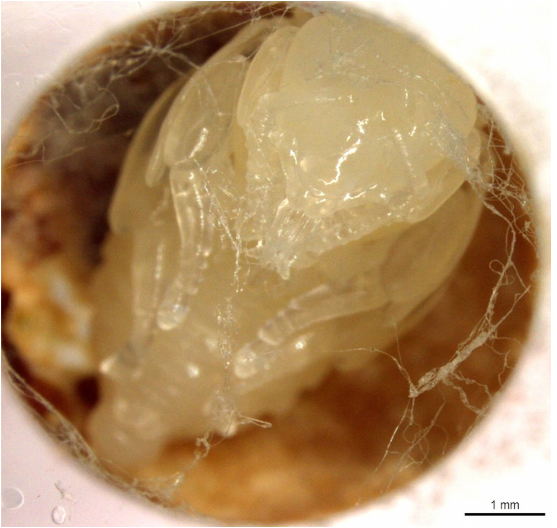Research unveils discovery on symbiosis between stingless bees and fungi
Research unveils discovery on symbiosis between stingless bees and fungi
What was thought to be just a fungus cultivated by the native Brazilian stingless bee known as Mandaguari (Scaptotrigona depilis) for the development of their larvae has proved to be a complex of three different fungi that interact by complementing each other to create an environment that is conducive for the development of future bees. The study "Stingless bee larvae require fungal steroid to pupate" was published on Thursday (19) by the Nature group's online journal Scientific Reports.
Cristiano Menezes, a researcher from Embrapa Eastern Amazon currently assigned to Embrapa Environment, is one of the authors, alongside a team of researchers from USP - Ribeirão Preto and American institutions. Menezes comments that the publication is the continuation of a previous work on bee fungi published in late 2015 by the journal Current Biology. On that occasion, the study was an unprecedented discovery about this kind of bee-fungi symbiosis and the result of a PhD thesis funded by Fapesp.
According to the researcher, the evolution of research has shown that the fungi produce a type of fat that is essential for the Mandaguari bees' diet. “Moreover, we have shown that it is in fact not a single fungus”, the scientist emphasized, “but rather a complex of three different fungi that interact by complementing each other to create an environment that is conducive for the development of future bees”.
In 2015, the symbiotic relationship between fungi and bees was considered ground-breaking because, as the researcher recalls, it was the first record of symbiosis between a social bee species and a cultivated fungus. By then the existence of symbiosis was known only between ant and termite species with cultivated fungi in their own nests.
About the study: the research points that the stingless bee larva must consume a specific brood cell fungus in order to continue development. This fungus is a member of the genus Zygosaccharomyces and provides essential steroid precursors to the developing bee, as the insects cannot synthesize such steroids.
Translation: Mariana Medeiros
Kélem Cabral (MTb 1981/PA)
Embrapa Eastern Amazon
Press inquiries
amazonia-oriental.imprensa@embrapa
Phone number: +55 91 3204-1099
Further information on the topic
Citizen Attention Service (SAC)
www.embrapa.br/contact-us/sac/


